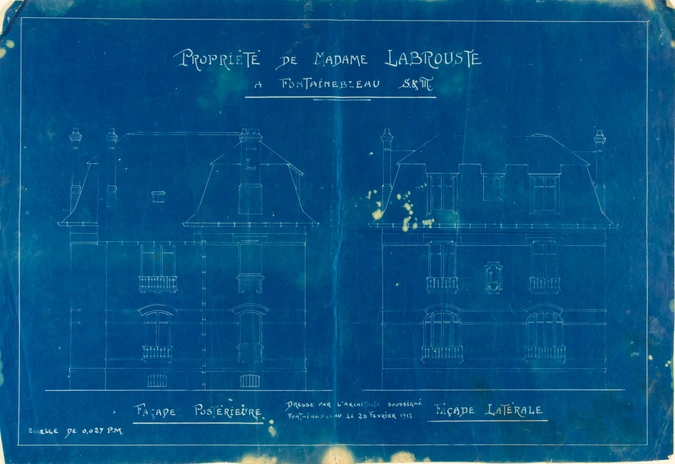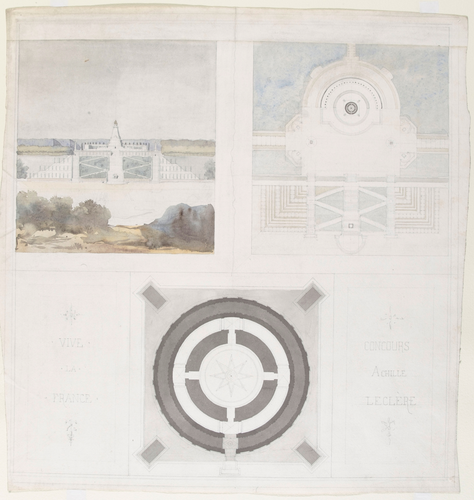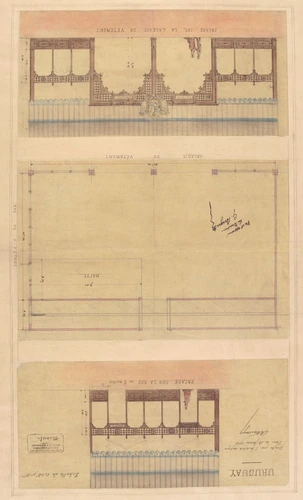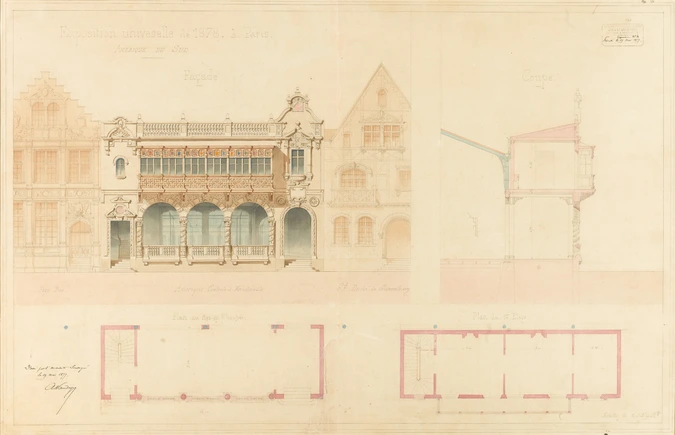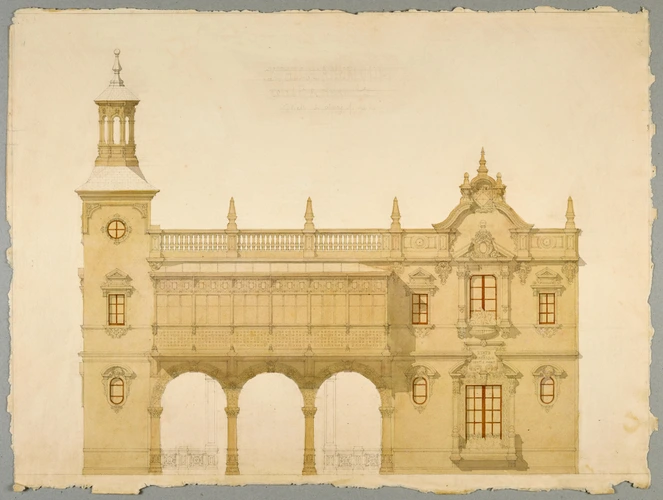Exposition universelle de 1878 : façade du pavillon du Luxembourg
After the humiliation of defeat in 1870, the suffering of the tragic events of the Commune, and the indemnity to Germany of five billion francs in gold, France, in 1878 was ready to fight back, and committed itself to drastic reform. The Universal Exhibition was to be the manifestation of her success.
The real architectural novelty was the amazing Street of Nations, located on the Champ de Mars. There was an enormous contrast between the Haussmann Street and this one, where twenty-seven countries were represented by a façade typifying their golden age. In the Street of Nations it was all angles, colours, and the clash of primitive architecture with extreme refinement. Haussmann's style was sober, constrained by a strict order and uniformity.
These characteristics did not escape the commentators: "It is as if these streets had been brought together deliberately to highlight each architectonic style. In order to accentuate their physiognomy, nations with nothing in common have been placed next to each other so that this juxtaposition might emphasise more forcefully the unique artistic character of each".
For the Luxembourg pavilion, it was difficult for the architect to choose which of the Germanic, French or Belgian styles would be representative of the Grand Duchy, a genuine crossroads of Europe; especially as what were referred to as the "minor states" – Monaco, the Republic of San Marino and the Principality of Andorra – had been asked to share the same façade.
Placed between the Gothic architecture of Portugal and the Islamic architecture of Tunisia, Vaudoyer finally chose a Renaissance façade to express the character of Luxembourg. This concept must have satisfied the Luxembourgeois, who commissioned the architect again to design their pavilions for the Universal Exhibitions of 1889 and 1900.


